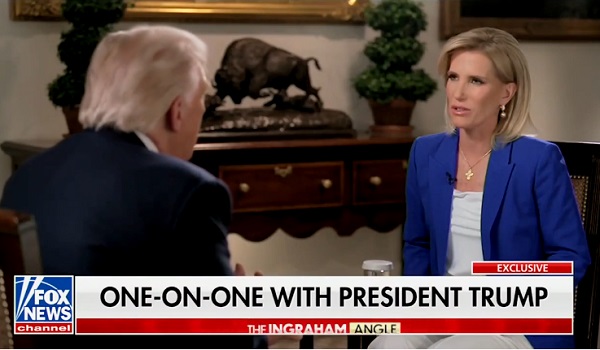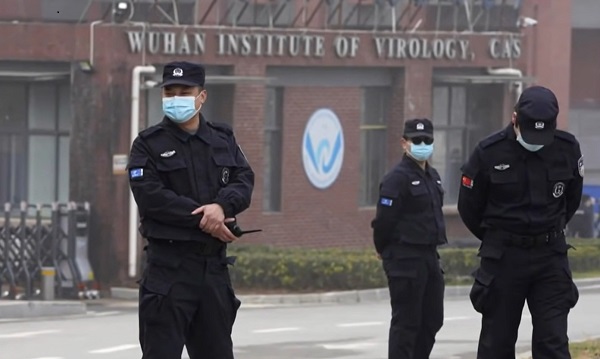Brownstone Institute
FDA Lab Uncovers Excess DNA Contamination in Covid-19 Vaccines

From the Brownstone Institute
By
An explosive new study conducted within the US Food and Drug Administration’s (FDA) own laboratory has revealed excessively high levels of DNA contamination in Pfizer’s mRNA Covid-19 vaccine.
Tests conducted at the FDA’s White Oak Campus in Maryland found that residual DNA levels exceeded regulatory safety limits by 6 to 470 times.
The study was undertaken by student researchers under the supervision of FDA scientists. The vaccine vials were sourced from BEI Resources, a trusted supplier affiliated with the National Institute of Allergy and Infectious Diseases (NIAID), previously headed by Anthony Fauci.
Recently published in the Journal of High School Science, the peer-reviewed study challenges years of dismissals by regulatory authorities, who had previously labelled concerns about excessive DNA contamination as baseless.
The FDA is expected to comment on the findings this week. However, the agency has yet to issue a public alert, recall the affected batches, or explain how vials exceeding safety standards were allowed to reach the market.
The Methods
The student researchers employed two primary analytical methods:
- NanoDrop Analysis – This technique uses UV spectrometry to measure the combined levels of DNA and RNA in the vaccine. While it provides an initial assessment, it tends to overestimate DNA concentrations due to interference from RNA, even when RNA-removal kits are utilised.
- Qubit Analysis – For more precise measurements, the researchers relied on the Qubit system, which quantifies double-stranded DNA using fluorometric dye.
Both methods confirmed the presence of DNA contamination far above permissible thresholds. These findings align with earlier reports from independent laboratories in the United States, Canada, Australia, Germany, and France.
Expert Reaction
Kevin McKernan, a former director of the Human Genome Project, described the findings as a “bombshell,” criticizing the FDA for its lack of transparency.
“These findings are significant not just for what they reveal but for what they suggest has been concealed from public scrutiny. Why has the FDA kept these data under wraps?” McKernan questioned.
 CSO and Founder of Medicinal Genomics
CSO and Founder of Medicinal Genomics
While commending the students’ work, he also noted limitations in the study’s methods, which may have underestimated contamination levels.
“The Qubit analysis can under-detect DNA by up to 70% when enzymes are used during sample preparation,” McKernan explained. “Additionally, the Plasmid Prep kit used in the study does not efficiently capture small DNA fragments, further contributing to underestimation.”
In addition to genome integration, McKernan highlighted another potential cancer-causing mechanism of DNA contamination in the vaccines.
He explained that plasmid DNA fragments entering the cell’s cytoplasm with the help of lipid nanoparticles could overstimulate the cGAS-STING pathway, a crucial component of the innate immune response.
“Chronic activation of the cGAS-STING pathway could paradoxically fuel cancer growth,” McKernan warned. “Repeated exposure to foreign DNA through COVID-19 boosters may amplify this risk over time, creating conditions conducive to cancer development.”
Adding to the controversy, traces of the SV40 promoter were detected among the DNA fragments. While the authors concluded that these fragments were “non-replication-competent” meaning they cannot replicate in humans, McKernan disagreed.
“To assert that the DNA fragments are non-functional, they would need to transfect mammalian cells and perform sequencing, which wasn’t done here,” McKernan stated.
“Moreover, the methods used in this study don’t effectively capture the full length of DNA fragments. A more rigorous sequencing analysis could reveal SV40 fragments several thousand base pairs long, which would likely be functional,” he added.
Regulatory Oversight under Scrutiny
Nikolai Petrovsky, a Professor of Immunology and director of Vaxine Pty Ltd, described the findings as a “smoking gun.”
“It clearly shows the FDA was aware of these data. Given that these studies were conducted in their own labs under the supervision of their own scientists, it would be hard to argue they were unaware,” he said.
 Nikolai Petrovsky, Professor of Immunology and Infectious Disease at the Australian Respiratory and Sleep Medicine Institute in Adelaide
Nikolai Petrovsky, Professor of Immunology and Infectious Disease at the Australian Respiratory and Sleep Medicine Institute in Adelaide
Prof Petrovsky praised the quality of work carried out by the students at the FDA labs.
“The irony is striking,” he remarked. “These students performed essential work that the regulators failed to do. It’s not overly complicated—we shouldn’t have had to rely on students to conduct tests that were the regulators’ responsibility in the first place.”
The Australian Therapeutic Goods Administration (TGA), which has consistently defended the safety of the mRNA vaccines, released its own batch testing results, claiming they met regulatory standards. However, Prof Petrovsky criticised the TGA’s testing methods.
“The TGA’s method was not fit for purpose,” he argued. “It didn’t assess all the DNA in the vials. It only looked for a small fragment, which would severely underestimate the total amount of DNA detected.”
Implications for Manufacturers and Regulators
Now that DNA contamination of the mRNA vaccines has been verified in the laboratory of an official agency and published in a peer-reviewed journal, it becomes difficult to ignore.
It also places vaccine manufacturers and regulators in a precarious position.
Addressing the contamination issue would likely require revising manufacturing processes to remove residual DNA, which Prof Petrovsky explained would be impractical.
“The only practical solution is for regulators to require manufacturers to demonstrate that the plasmid DNA levels in the vaccines are safe,” Prof Petrovsky stated.
“Otherwise, efforts to remove the residual DNA would result in an entirely new vaccine, requiring new trials and effectively restarting the process with an untested product.”
Now the onus is on regulators to provide clarity and take decisive action to restore confidence in their oversight. Anything less risks deepening the scepticism of the public.
Both the US and Australian drug regulators have been approached for comment.
Republished from the author’s Substack
Brownstone Institute
Bizarre Decisions about Nicotine Pouches Lead to the Wrong Products on Shelves

From the Brownstone Institute
A walk through a dozen convenience stores in Montgomery County, Pennsylvania, says a lot about how US nicotine policy actually works. Only about one in eight nicotine-pouch products for sale is legal. The rest are unauthorized—but they’re not all the same. Some are brightly branded, with uncertain ingredients, not approved by any Western regulator, and clearly aimed at impulse buyers. Others—like Sweden’s NOAT—are the opposite: muted, well-made, adult-oriented, and already approved for sale in Europe.
Yet in the United States, NOAT has been told to stop selling. In September 2025, the Food and Drug Administration (FDA) issued the company a warning letter for offering nicotine pouches without marketing authorization. That might make sense if the products were dangerous, but they appear to be among the safest on the market: mild flavors, low nicotine levels, and recyclable paper packaging. In Europe, regulators consider them acceptable. In America, they’re banned. The decision looks, at best, strange—and possibly arbitrary.
What the Market Shows
My October 2025 audit was straightforward. I visited twelve stores and recorded every distinct pouch product visible for sale at the counter. If the item matched one of the twenty ZYN products that the FDA authorized in January, it was counted as legal. Everything else was counted as illegal.
Two of the stores told me they had recently received FDA letters and had already removed most illegal stock. The other ten stores were still dominated by unauthorized products—more than 93 percent of what was on display. Across all twelve locations, about 12 percent of products were legal ZYN, and about 88 percent were not.
The illegal share wasn’t uniform. Many of the unauthorized products were clearly high-nicotine imports with flashy names like Loop, Velo, and Zimo. These products may be fine, but some are probably high in contaminants, and a few often with very high nicotine levels. Others were subdued, plainly meant for adult users. NOAT was a good example of that second group: simple packaging, oat-based filler, restrained flavoring, and branding that makes no effort to look “cool.” It’s the kind of product any regulator serious about harm reduction would welcome.
Enforcement Works
To the FDA’s credit, enforcement does make a difference. The two stores that received official letters quickly pulled their illegal stock. That mirrors the agency’s broader efforts this year: new import alerts to detain unauthorized tobacco products at the border (see also Import Alert 98-06), and hundreds of warning letters to retailers, importers, and distributors.
But effective enforcement can’t solve a supply problem. The list of legal nicotine-pouch products is still extremely short—only a narrow range of ZYN items. Adults who want more variety, or stores that want to meet that demand, inevitably turn to gray-market suppliers. The more limited the legal catalog, the more the illegal market thrives.
Why the NOAT Decision Appears Bizarre
The FDA’s own actions make the situation hard to explain. In January 2025, it authorized twenty ZYN products after finding that they contained far fewer harmful chemicals than cigarettes and could help adult smokers switch. That was progress. But nine months later, the FDA has approved nothing else—while sending a warning letter to NOAT, arguably the least youth-oriented pouch line in the world.
The outcome is bad for legal sellers and public health. ZYN is legal; a handful of clearly risky, high-nicotine imports continue to circulate; and a mild, adult-market brand that meets European safety and labeling rules is banned. Officially, NOAT’s problem is procedural—it lacks a marketing order. But in practical terms, the FDA is punishing the very design choices it claims to value: simplicity, low appeal to minors, and clean ingredients.
This approach also ignores the differences in actual risk. Studies consistently show that nicotine pouches have far fewer toxins than cigarettes and far less variability than many vapes. The biggest pouch concerns are uneven nicotine levels and occasional traces of tobacco-specific nitrosamines, depending on manufacturing quality. The serious contamination issues—heavy metals and inconsistent dosage—belong mostly to disposable vapes, particularly the flood of unregulated imports from China. Treating all “unauthorized” products as equally bad blurs those distinctions and undermines proportional enforcement.
A Better Balance: Enforce Upstream, Widen the Legal Path
My small Montgomery County survey suggests a simple formula for improvement.
First, keep enforcement targeted and focused on suppliers, not just clerks. Warning letters clearly change behavior at the store level, but the biggest impact will come from auditing distributors and importers, and stopping bad shipments before they reach retail shelves.
Second, make compliance easy. A single-page list of authorized nicotine-pouch products—currently the twenty approved ZYN items—should be posted in every store and attached to distributor invoices. Point-of-sale systems can block barcodes for anything not on the list, and retailers could affirm, once a year, that they stock only approved items.
Third, widen the legal lane. The FDA launched a pilot program in September 2025 to speed review of new pouch applications. That program should spell out exactly what evidence is needed—chemical data, toxicology, nicotine release rates, and behavioral studies—and make timely decisions. If products like NOAT meet those standards, they should be authorized quickly. Legal competition among adult-oriented brands will crowd out the sketchy imports far faster than enforcement alone.
The Bottom Line
Enforcement matters, and the data show it works—where it happens. But the legal market is too narrow to protect consumers or encourage innovation. The current regime leaves a few ZYN products as lonely legal islands in a sea of gray-market pouches that range from sensible to reckless.
The FDA’s treatment of NOAT stands out as a case study in inconsistency: a quiet, adult-focused brand approved in Europe yet effectively banned in the US, while flashier and riskier options continue to slip through. That’s not a public-health victory; it’s a missed opportunity.
If the goal is to help adult smokers move to lower-risk products while keeping youth use low, the path forward is clear: enforce smartly, make compliance easy, and give good products a fair shot. Right now, we’re doing the first part well—but failing at the second and third. It’s time to fix that.
Addictions
The War on Commonsense Nicotine Regulation

From the Brownstone Institute
Cigarettes kill nearly half a million Americans each year. Everyone knows it, including the Food and Drug Administration. Yet while the most lethal nicotine product remains on sale in every gas station, the FDA continues to block or delay far safer alternatives.
Nicotine pouches—small, smokeless packets tucked under the lip—deliver nicotine without burning tobacco. They eliminate the tar, carbon monoxide, and carcinogens that make cigarettes so deadly. The logic of harm reduction couldn’t be clearer: if smokers can get nicotine without smoke, millions of lives could be saved.
Sweden has already proven the point. Through widespread use of snus and nicotine pouches, the country has cut daily smoking to about 5 percent, the lowest rate in Europe. Lung-cancer deaths are less than half the continental average. This “Swedish Experience” shows that when adults are given safer options, they switch voluntarily—no prohibition required.
In the United States, however, the FDA’s tobacco division has turned this logic on its head. Since Congress gave it sweeping authority in 2009, the agency has demanded that every new product undergo a Premarket Tobacco Product Application, or PMTA, proving it is “appropriate for the protection of public health.” That sounds reasonable until you see how the process works.
Manufacturers must spend millions on speculative modeling about how their products might affect every segment of society—smokers, nonsmokers, youth, and future generations—before they can even reach the market. Unsurprisingly, almost all PMTAs have been denied or shelved. Reduced-risk products sit in limbo while Marlboros and Newports remain untouched.
Only this January did the agency relent slightly, authorizing 20 ZYN nicotine-pouch products made by Swedish Match, now owned by Philip Morris. The FDA admitted the obvious: “The data show that these specific products are appropriate for the protection of public health.” The toxic-chemical levels were far lower than in cigarettes, and adult smokers were more likely to switch than teens were to start.
The decision should have been a turning point. Instead, it exposed the double standard. Other pouch makers—especially smaller firms from Sweden and the US, such as NOAT—remain locked out of the legal market even when their products meet the same technical standards.
The FDA’s inaction has created a black market dominated by unregulated imports, many from China. According to my own research, roughly 85 percent of pouches now sold in convenience stores are technically illegal.
The agency claims that this heavy-handed approach protects kids. But youth pouch use in the US remains very low—about 1.5 percent of high-school students according to the latest National Youth Tobacco Survey—while nearly 30 million American adults still smoke. Denying safer products to millions of addicted adults because a tiny fraction of teens might experiment is the opposite of public-health logic.
There’s a better path. The FDA should base its decisions on science, not fear. If a product dramatically reduces exposure to harmful chemicals, meets strict packaging and marketing standards, and enforces Tobacco 21 age verification, it should be allowed on the market. Population-level effects can be monitored afterward through real-world data on switching and youth use. That’s how drug and vaccine regulation already works.
Sweden’s evidence shows the results of a pragmatic approach: a near-smoke-free society achieved through consumer choice, not coercion. The FDA’s own approval of ZYN proves that such products can meet its legal standard for protecting public health. The next step is consistency—apply the same rules to everyone.
Combustion, not nicotine, is the killer. Until the FDA acts on that simple truth, it will keep protecting the cigarette industry it was supposed to regulate.
-

 Business2 days ago
Business2 days agoLiberals refuse to disclose the amount of taxpayer dollars headed to LGBT projects in foreign countries
-

 Daily Caller1 day ago
Daily Caller1 day agoUS Nuclear Bomber Fleet Shares Fence With Trailer Park Linked To Chinese Intel-Tied Fraudster
-

 Digital ID2 days ago
Digital ID2 days agoCanada moves forward with digital identification for federal benefits seekers
-

 Alberta2 days ago
Alberta2 days agoSchool defunding petition in Alberta is a warning to parents
-

 espionage1 day ago
espionage1 day agoChinese-Owned Trailer Park Beside U.S. Stealth Bomber Base Linked to Alleged Vancouver Repression Case
-

 Daily Caller1 day ago
Daily Caller1 day agoLaura Ingraham Presses Trump On Allowing Flood Of Chinese Students Into US
-

 COVID-191 day ago
COVID-191 day agoSpy Agencies Cozied Up To Wuhan Virologist Before Lying About Pandemic
-

 MAiD7 hours ago
MAiD7 hours agoQuebec has the highest euthanasia rate in the world at 7.4% of total deaths














